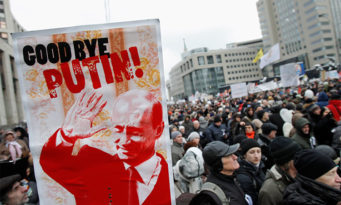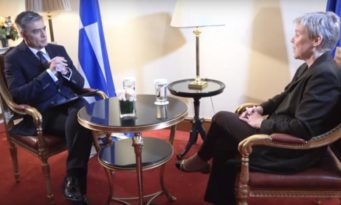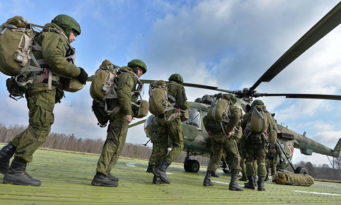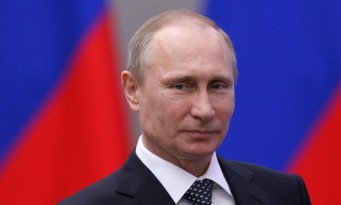Siil 2015: Inside Estonia’s biggest military exercise
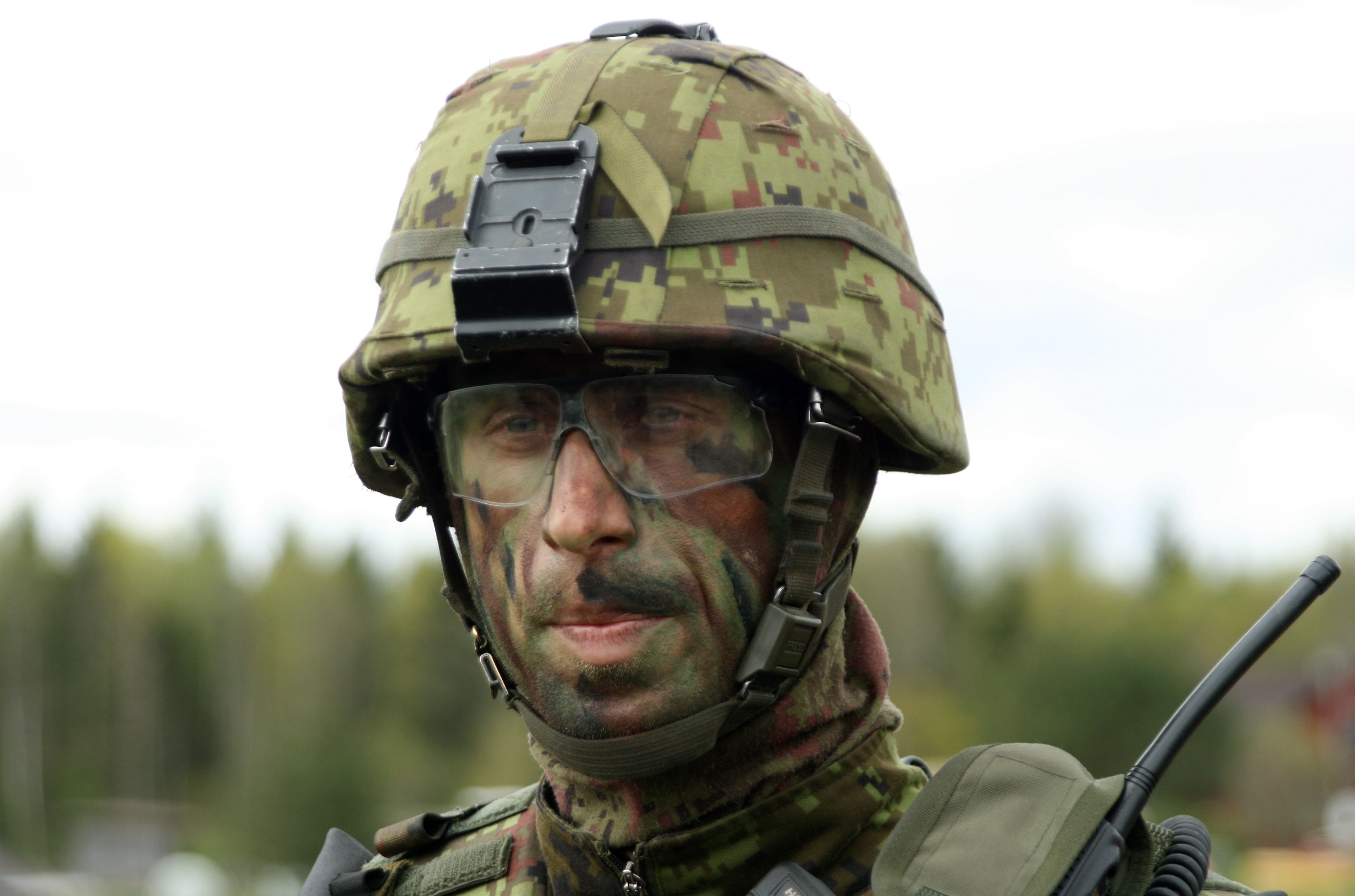
- By defencematters
Estonia’s biggest military exercise, Siil/ Stead fast Javellin, has just been completed near the NATO outer border
Edgars Skvariks
In a dimly lit and half-empty lecture hall in the Estonian military base at Tapa, Estonian army representatives describe the military maneuvers that are about to play out during the Siil 2015 (Hedgehog 2015) military exercises in the country – an attack from a fictitious country by the name of Aslavia. The aim of the aggressor country is to change the political situation in Estonia, and to achieve this, a decision to use military force against Estonia is made by attacking small villages and towns. In order to defend their nation, Estonia has made the decision to mobilize over 13,000 reservists, home guards, professional soldiers and allied soldiers to quickly repel the invasion of their country.
The name of the military maneuvers Siil 2015 was not chosen by accident. As Estonian army representatives explain, in an Estonian national epic, the hedgehog is an animal which offers useful advice to help fight enemies. At the same time, the hedgehog itself symbolizes a small animal, but one which can offer substantial resistance if threatened. The military exercise itself, which has been planned for the past two years, takes place several kilometers from Tapa, and participating in it are not just soldiers from the Estonian armed forces, but also several hundred allied soldiers with their military equipment, including aircraft. The Estonian soldiers leading the column of military vehicles keep saying that the location of the exercise is not far off – about a 40 to 50 minute drive. "Be patient, we will soon be at our destination," an Estonian officer says, after being asked whether the secrecy of the place where the maneuvers are to be held is due to security reasons.



As it later became clear, the site of the military exercise, near the Estonia-Russia border and thus an outer NATO border area, has not been chosen by accident. Military maneuvers in Estonia are usually played out in several spots in a specific area. Last year, similar maneuvers were played out in Western Estonia, and this year it was this region’s turn. As Estonian army representatives explain, rotating the location of these military maneuvers is due to the state’s desire to play out these exercises in different regions and with different scenarios, in order to see how well they are prepared for various situations. They also point out that winning or losing the respective military maneuver is not important, as the most important here is to improve the skills of soldiers and gain the necessary experience in the field. This includes not only communication amongst themselves, but also with civilians, as the exercises are taking place in close contact with civilians.



Allied soldiers playing role of aggressor; blockade of Estonian forces
One of the exercise’s sites is located in a small field next to a home in the middle of a forest. On the road to the site, large pits have been dug-up, which are covered with camouflage nets. Here, military equipment can be positioned and hidden from sight. Estonian Artillery Battalion Commander, Lieutenant-General Kaarel Maesall, in clear Latvian it must be added, points out that the owners of the surrounding properties have allowed the Estonian army to hold maneuvers in the area. He said that the local residents have been well informed about the military maneuvers. "If any damage is caused to their properties, we will compensate them accordingly," Maesall explains. He points out that during one exercise, a U.S. tank, playing the role of the enemy, did knock over three trees, but added that this is normal in such situations and that the Estonian army will rectify the damage caused. If ruts are left behind on fields, they will be smoothed-out, he added. Private equipment of the local households are not used during the maneuvers, but if the necessity arises, Estonia has the necessary legal instruments to approve the use of private equipment for its armed forces. In Latvia, the situation is a bit different – several military representatives point out that this is a matter which still has not been completely solved in Estonia’s neighboring country.


The training field itself is empty, as well as the country road next to it, where, if they squeeze tightly together, maybe two vehicles might be able to drive next to each other, but larger military vehicles must ride in columns. A little while later, several vehicles appear at the edge of the forest area, which are being driven by Estonian soldiers and/or reservists. The vehicles themselves have been masked with spruce branches, and are carrying artillery guns behind them, which are quickly set-up in the field. The enemy group of approximately 200 soldiers is about 10-kilometers from this position.
"After the guns are positioned, the soldiers submit their topographical coordinates to our command center, where the weather conditions, wind speeds and the temperature are also all taken into account," Maesall explains. At one of the approximately 10 artillery guns is Aleksej Ivanov, who lives in Tallinn. He explains that he volunteered for the exercises to refresh the skills he learned while serving in the armed forces ten years ago and get away from his daily routine. Ivanov himself works as a journalist, but has been appointed to the artillery battery during the exercises, where for 11 days he is responsible for the gun powder used by the artillery guns, so that they can successfully hit their targets. The guns guided by Ivanov can shoot five shells a minute. Speaking about the readiness of the Estonian armed forces since the time he himself served, Ivanov praises the fact that they are much better equipped and the army itself is also better prepared. "But overall, the army is and remains the army," he said.



Exercises outside the usual training grounds
A bit further away from the heat of the action, several pieces of heavy equipment have been placed near a house, including one in the yard outside the house. The road to the house is a small one through a forest, which is usually not used much, but now is full of military vehicles, support centers and soldiers. A field-hospital has also been set-up near the road, which is partially hidden by the forest. Its position is revealed only by the red-crosses on the sides of the vehicles, as well as some soldiers bustling in the nearby ditches, hiding and waiting for their next operation. Moving to the next post is not easy, as the military transportation column is moving quite slow and stops every time new information is received on enemy positions. The column keeps moving ahead until an order from command is given to turn back, or divert to an overgrown road which has obviously not been used for a very long time.
Outside a nearby house, Captain Matthias Puusepp calmly explains that his team is currently in a blocking/defensive position, and observing the development of events. He said that if necessary, and if the order is given, his team is ready to go on the attack. Captain Puusepp and his team have been in this position for about two hours. None of the soldiers in his team have slept for more than four hours that day. Initially, some cows grazing in the adjacent field show interest in all of the action, but gradually they also lose interest in the soldiers. Meanwhile, an aircraft participating in the maneuvers flies overhead. The soldiers suddenly begin to alarmingly ask one another in English - enemy or friend? A few seconds later, they get the order - "enemy – everyone, get in your hiding positions!
Puusepp, standing near a military transportation vehicle, later points out that the position of the enemy unit is not yet known, but that his team is in active communication with command to find out the latest information. His team also has specialists from several foreign countries, who, if necessary, give information about the movement of military vehicles, including enemy aircraft. Asked whether low-flying aircraft cannot intercept his communication, the commander points out that such a possibility exists, but adds that he doubts this was the purpose for the low-flying flight. Soldiers participating in the exercises do not use mobile phones, as lessons have also been learned from the Ukraine conflict in battle situations, where communication from military officers using their mobile phones was intercepted by the enemy. Puusepp points out that none of the soldiers use their mobile phones during the maneuvers, and most of them are switched off at all times. The only time soldiers are permitted to use mobile phones is to call their families. At the same time, enemy reconnaissance units are also out, but have not yet been noticed in this specific area.
While our discussion is taking place, two other soldiers are carefully studying a map of the surrounding area, trying to determine the enemy positions. In the two hours Puusepp’s team has been waiting outside the house, no shots have been fired. It is also forbidden to photograph the soldiers, as this is information that can get in the hands of their enemies. After some active radio communication, Puusepp gives his team the order to leave their positions and bids farewell, expressing hope that his team will be able to come into close contact with the enemy.
As the Estonian Defense Ministry stated after the exercises, Siil showed that the Estonian defense system works and that discussions on the necessity to completely turn its armed forces into a professional one can finally stop.
"I closely followed along the planning and procession of these military exercises. The Estonian defense model is working very well," Estonian Defense Minister Sven Mikser added.







